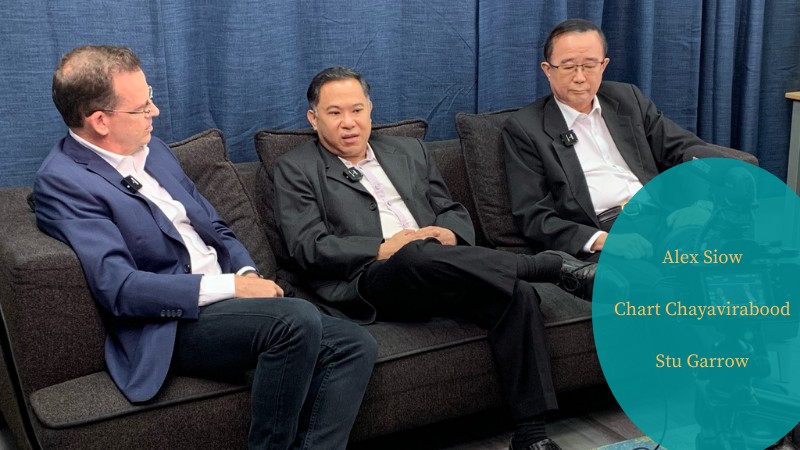The tech industry faces a huge HR crisis. The sector is estimated to face a global skill-shortage of 4.3 million workers by 2030. Southeast Asia faces an expected shortfall of anywhere between 600,000 and 1.2 million IT workers.
Finding the right talent is the second biggest cause of disruption for enterprises in Southeast Asia. Indonesia expects a shortage of nine million skilled and semi-skilled IT workers by 2030. The Philippines have IT graduates only to fill 25% of available IT job vacancies. A ManpowerGroup survey shows 48% of employers having difficulty filling vacancies across Asia in 2015, compared to 28% in 2006. The availability of talent for niche positions is worse. Just 0.8% of Singapore’s IT workers specialise in security.
Industries across the region rely on outsourcing and attracting talent from other regions to bridge the gap. But considering the universal nature of the skill-shortage, such tactics are unsustainable.
Here are five ways IT leaders in South East Asia can close the tech skill-shortage.
1. Offer Higher Level Rewards
The fight for talent is global. CIOs in Southeast Asia will have to match their global competitors in benefits to attract top talent.
But salary alone will not sustain an employee’s motivation or commitment. The wages meet the basic physiological and safety needs, such as food, clothing, security, and health. Management experts such as Abraham Maslow and others agree it takes much more to motivate and retain top talent.
IT leaders have to create conditions for the workforce to achieve esteem and self-actualization. These needs translate as status, recognition, opportunities to apply skills, and more.
2. Encourage Re-learning
Relearning is a way of life for IT professionals. Even competent employees face the pressure of disruptive technology. For example, automation poses an existential threat to low-skilled jobs and overhauls the job description of cognitive-based jobs.
The talent crunch is most in new technologies. In southeast Asia, the crunch is rife in analytics, artificial intelligence, and blockchain. Businesses eager to embrace these technologies find themselves stifled. The skill base of the workforce has not expanded at scale. Even for established technologies such as the cloud, technology has evolved faster than the skill-sets.
The big and eternal skill-shortage or skill-gap force IT leaders to institutionalise training and learning as part of work. Practical minded IT leaders do not seek technical skills for the position. They hire people with the right soft skills and willingness to learn.
3. Coordinate with the Government and Others

A major reason for the skill-shortage is universities and colleges across the region not producing talent to match demand. Most students graduate without industry-specific skills. For instance, 90% of IT graduates in Malaysia need extra training before they become work-ready. Likewise, 90% of IT graduates in Thailand do not pass the basic qualifications set by potential employers.
Governments across Southeast Asia face a stiff challenge to enhance the skill-sets of its populace. Successful IT leaders do not wait for the government though. They collaborate with governments, universities and other third-party entities, to launch accelerators, incubators, and tech education programs. They offer industry level support, such as resource persons for training, funding, scholarships, and internships.
Singapore’s National Trades Union Congress’ returners programme supports people returning to work after a break. The scheme matches professionals, managers, and technicians with companies. Companies offer them a trial role, and if found suitable, offer permanent positions.
CoderSchool at Ho Chi Minh City, Vietnam, offers training in design, programming and data science. The aim is to supply start-ups with CTOs, system architects, and project managers. The school’s rigorous coursework co-opts lectures, hands-on development, and several other approaches. The school also encourages students to overcome the cultural block and become leaders.
4. Herald Cultural Shifts
Most countries of southeast Asia have evolved fast. The shift from third-world economies to the second-world manufacturing economy and now the first-world tech economy has been at a swift pace. Society and culture struggle to catch-up at such a pace.
The onus is on IT leaders to build a learning organization, and promote a culture of transparency, openness, and sharing. A culture that values knowledge prompt employees to stay abreast of current trends and enhance skills.
An important dynamic of a learning organization is team learning. CIOs cultivate a culture of sharing and openness, where employees consider colleagues as allies than as rivals. Skilled and experienced hands disseminate knowledge and skills to others. As the skill-levels of the workforce rise, dependence on any set of employees reduces.
Successful leaders make the best out of a bad situation. They take the loss of innovation gone wrong as an investment to learn. A culture of tolerating mistakes is vital to sustaining innovation and for talent to thrive.
5. Lead from the Front
Successful IT leaders do not suffer from complacency. They are not satisfied with the status quo, even if the going is good. They constantly assess the external and internal environment, conduct SWOT and other analysis. They identify imminent challenges and lead proactive change. They bring change to their enterprise on their terms, before competitors or other environmental changes force it upon them. They convince the rank and file what is in it for them, and lead by example. They become mentors for employees, guiding them through difficult change. They adopt a mix of transformative leadership style and servant leadership style, as the situation demands.
Industry 4.0 is a trigger to put in place initiatives for re-skilling the workforce. Successful leaders put in sustainable efforts to enhance the skills of their workforce. They promote the right culture and strive to curate a knowledge ecosystem. They focus on creating opportunities rather than using technology to cut jobs. Such efforts will ensure their organizations will thrive and will not fall by the wayside for want of talent.











